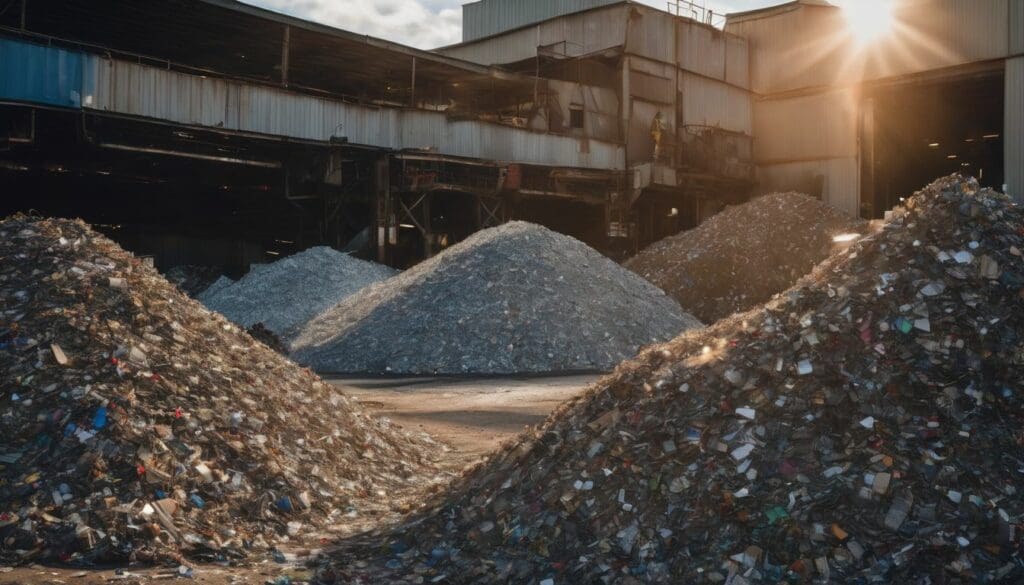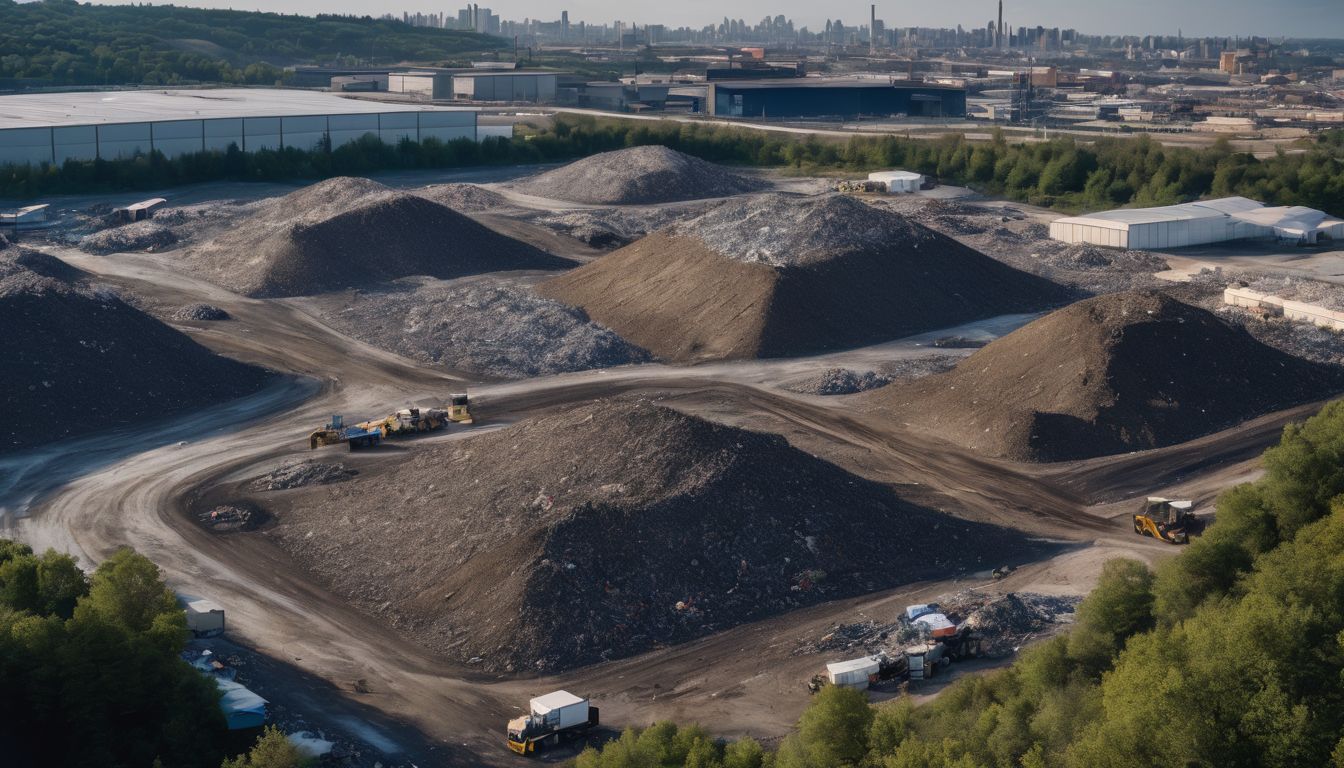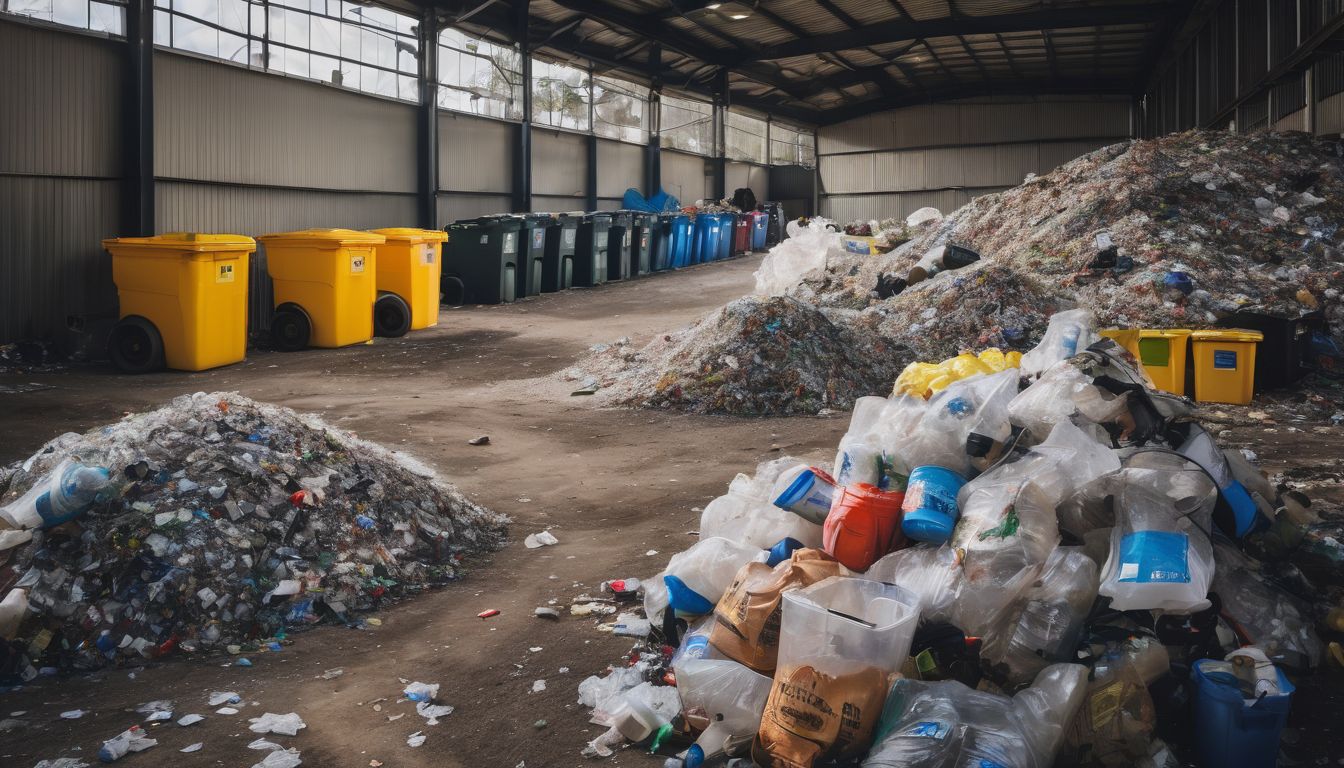Recycling can seem confusing, with mixed messages about its benefits and effectiveness. Did you know, for example, that recycling one aluminium can save enough energy to run a TV for three hours? Our blog will bust common myths, proving that your recycling efforts truly make a difference.
Let’s uncover the truth together!
Key Takeaways
- Recycling technology has advanced, ensuring that materials like paper, plastic, glass, and metal are efficiently sorted and reused instead of ending up in landfills.
- Repurposing recyclable materials consumes significantly less energy than producing new items from raw resources. For instance, recycling aluminium can save up to 95% of the energy required for manufacturing from fresh materials.
- Recycled products must pass rigorous quality control processes; they’re often just as durable and reliable as those made from virgin resources.
- The recycling industry fosters economic growth by creating a variety of jobs in sectors such as sorting, processing, transportation, and technology development.
- It’s important to be aware of greenwashing. True environmentally friendly products have minimal impact on the environment through their entire lifecycle and are supported by reputable certifications or transparent production information.
Debunking Common Recycling Myths
Moving past the basics, it’s time to tackle some misconceptions head-on. Many believe that materials sent for recycling just end up in landfills anyway. However, this isn’t true. The industry has developed sophisticated sorting technology to ensure that recyclable items are effectively separated and processed.
These efforts lead to a significant reduction in waste and support a more sustainable living environment.
Another false assumption is that recycling doesn’t reduce energy consumption. Contrary to this myth, repurposing materials often requires less energy than creating products from scratch with raw resources.
This not only conserves precious renewable resources but also cuts down on carbon emissions dramatically, playing a pivotal role in environmental conservation and sustainability efforts across the globe.
Myth 1: All recycled materials end up in landfills
The truth about mixed recycling and the process of sorting and separating recyclables will debunk this common misconception.
The truth about mixed recycling
Mixed recycling involves collecting various types of recyclable materials, such as paper, plastic, glass, and metal, together in one bin. These materials are then sorted and separated at a recycling facility.
The sorting process uses advanced technology to separate different materials efficiently. Once sorted, the recyclables are processed into new products or materials for reuse.
Recycling mixed materials is an effective way to reduce waste going to landfills and conserves resources by giving these items a new life. However, contamination can hinder the recycling process; hence it’s crucial to follow proper guidelines when disposing of items into mixed recycling bins.
Understanding how mixed recycling works empowers individuals to make informed choices in their daily waste disposal habits.
The process of sorting and separating recyclables
Myth 2: Recycling does not save energy
Recycling does save energy. It reduces the need for extracting, refining, and processing raw materials to create new products, ultimately reducing carbon emissions and conserving valuable resources.
The energy and resources saved by recycling
Recycling saves energy and valuable resources. It reduces the need for raw materials, such as timber, water, and minerals, conserving our natural resources. In addition to this, producing items from recycled materials uses less energy compared to manufacturing from scratch.
This significantly decreases carbon emissions and aids in combatting climate change. By recycling paper alone, we can save millions of trees each year.
Furthermore, recycling metal also helps in substantial energy savings. For instance, recycling aluminium saves up to 95% of the energy required to produce it from raw materials. This not only reduces carbon emissions but also minimises air and water pollution associated with mining processes.
The impact of recycling on reducing carbon emissions
Through the energy and resources saved by recycling, there is a significant reduction in carbon emissions. Recycling materials like paper, glass, and metals minimises the need for new raw materials to be extracted and processed.
As a result, this process uses less energy and reduces greenhouse gas emissions associated with traditional manufacturing processes.
Additionally, recycling reduces the amount of waste sent to landfills or incinerators which produce harmful greenhouse gases. By avoiding these methane-producing disposal methods, recycling directly contributes to lowering carbon emissions.
Myth 3: Recycled products are of inferior quality
– Advancements in recycling technology have significantly improved the quality of recycled products, making them almost indistinguishable from their non-recycled counterparts.
– The quality control process for recycled products ensures that they meet the same standards as newly manufactured goods.
The advancements in recycling technology
Recycling technology has made significant strides, enabling the efficient processing of various materials. Innovations such as advanced sorting systems and cutting-edge machinery have revolutionised the recycling process, allowing for greater precision in separating different types of recyclables.
Furthermore, developments in material science have led to the creation of high-quality recycled products that are on par with their virgin counterparts, promoting sustainable waste management and resource conservation.
Advanced recycling technologies have paved the way for closed-loop systems, where materials can be repurposed multiple times without compromising quality. Through these advancements, environmentally conscious individuals can contribute to a circular economy by embracing eco-friendly practices and supporting green initiatives aimed at reducing landfill waste and promoting sustainable living.
The quality control process for recycled products
Recycled products undergo rigorous quality control to ensure they meet industry standards. Inspectors examine materials for impurities and defects, then use advanced technology to assess the strength and durability of the recycled items.
Any substandard products are removed from the production line to maintain high-quality standards. This meticulous process guarantees that eco-friendly consumers receive top-notch recycled goods that perform just as well as their non-recycled counterparts.
Manufacturers employ strict quality control measures throughout the entire recycling process. They conduct thorough tests to verify that the finished products meet safety and performance requirements, assuring consumers of the reliability and sustainability of recycled items.
Myth 4: Recycling leads to job losses
The job opportunities created by the recycling industry are often overlooked, but in reality, recycling leads to the creation of new jobs and can stimulate the economy. The misconception that it results in job losses is unfounded and fails to recognise the positive impact of recycling on employment.
The job opportunities created by the recycling industry
The recycling industry offers a wide range of job opportunities, from sorting and processing recyclables to research and development in recycling technology. It also creates roles in transportation, sales, and marketing for recycled products.
The growth of this industry stimulates the economy and promotes sustainable practices.
With an emphasis on conservation and environmental impact, many individuals are seeking employment within the recycling sector. As awareness increases, so does the demand for skilled workers at all levels of the recycling process.
How recycling can stimulate the economy
Recycling stimulates the economy by creating job opportunities and generating revenue. As more materials are recycled, there is a growing demand for workers to collect, process, and manufacture recycled products.
This leads to the expansion of industries related to recycling, contributing to economic growth while also promoting sustainable practices. Additionally, recycling reduces the need for raw material extraction and manufacturing from scratch, saving energy and resources which can be redirected towards other sectors of the economy.
The recycling industry directly supports local economies through employment opportunities in collection services, sorting facilities, and manufacturing plants. Furthermore, as demand for recycled materials increases, businesses invest in developing innovative technologies and processes aimed at improving efficiency and environmental impact—further bolstering economic development while reducing waste management costs.
Myth 5: Everything that is labeled “natural” or “eco-friendly” is environmentally friendly
Many products labeled as “natural” or “eco-friendly” may not actually be environmentally friendly. It is important to understand the difference and be aware of greenwashing in order to make truly eco-conscious choices.
The difference between natural and environmentally friendly
Products labelled as “natural” may contain organic or naturally derived ingredients, but that does not necessarily mean they are environmentally friendly. On the other hand, environmentally friendly products are designed to have minimal impact on the environment throughout their entire lifecycle.
While natural products involve elements from nature, environmentally friendly products take into account their production process and overall environmental impact.
When a product is labelled as eco-friendly or environmentally friendly, it means that its manufacturing process and materials used are sustainable and do not harm the environment. This includes using renewable resources, reducing energy consumption during production, minimising waste generation, and ensuring responsible disposal at the end of its life cycle.
Greenwashing and how to spot it
Moving on from understanding the difference between natural and environmentally friendly, it’s essential to be able to spot greenwashing in products. Greenwashing refers to misleading marketing or PR spin that makes a product seem more environmentally friendly than it really is.
To avoid falling for these deceptive tactics, look out for specific clues. Look beyond the “eco-friendly” label and examine whether a product’s claims are substantiated by certifications from reputable environmental organisations or transparent information about its production process.
Additionally, consider the overall sustainability efforts of the company producing the item before making your purchasing decisions.
Myth 6: Recycling causes more harm to the environment than manufacturing new products
The environmental impact of extracting raw materials
The benefits of recycling
The environmental impact of extracting raw materials
Extracting raw materials for manufacturing products has a significant environmental impact. The extraction process contributes to deforestation, soil erosion, and habitat destruction.
It also leads to air and water pollution, harming ecosystems and wildlife. Furthermore, mining activities release greenhouse gases into the atmosphere, exacerbating climate change.
The reliance on extracting raw materials further depletes natural resources such as minerals, metals, and fossil fuels. This depletion poses long-term sustainability challenges for future generations.
As environmentally conscious individuals supporting conservation and eco-friendly practices, understanding the detrimental effects of raw material extraction is crucial in making informed choices about consumption and waste management.
The benefits of recycling
Recycling offers numerous benefits to the environment and society. By reusing materials, we reduce the need for raw material extraction, conserving natural resources and minimising habitat destruction.
This helps in managing landfill waste effectively while also lowering carbon emissions. Recycling promotes energy efficiency as it requires less energy to process recycled materials compared to manufacturing new products from raw materials, contributing to a reduction in greenhouse gas emissions.
Furthermore, recycling stimulates economic growth by creating job opportunities within the industry. It fosters innovation and technological advancements in waste management systems leading to sustainable practices.
Conclusion
In conclusion, understanding the truth about recycling helps to dispel common myths and encourages eco-friendly practices. The impact of recycling on reducing carbon emissions and saving energy highlights its environmental benefits.
By acknowledging the advancements in recycling technology and job opportunities created by the industry, individuals can actively support conservation efforts. Ultimately, debunking these myths empowers environmentally conscious individuals to make informed choices for a greener future.
Together, we can contribute to sustainable living and effective waste management through responsible recycling practices.
FAQs
1. What are some common recycling myths?
Some common recycling misconceptions include the ideas that all items with recycling symbols can be recycled, eco-friendly practices don’t make a difference, and everything thrown in the recycle bin avoids landfills.
2. How do I know if something is really recyclable?
Check local guidelines for what materials your community recycles and look for recycling symbols on the items along with instructions; this helps ensure proper landfill management through effective green living habits.
3. Can my individual effort in recycling make an impact?
Absolutely! Each person’s eco-friendly practices contribute to larger environmental benefits. By debunking these myths, we recognise that every act of recycling plays a part in protecting our planet.
4. Is it true that most things I recycle end up in a landfill anyway?
No, while not everything may be recycled properly due to contamination or incorrect disposal, many items are successfully processed and kept out of landfills when following correct ecofriendly practices.





